For centuries the mysterious Nag Hammadi Codices lay buried too forgotten nether a cliff inward rural Arab Republic of Egypt until a local famer institute them inward 1945, unopen to the Upper Egyptian town of Nag Hammadi.
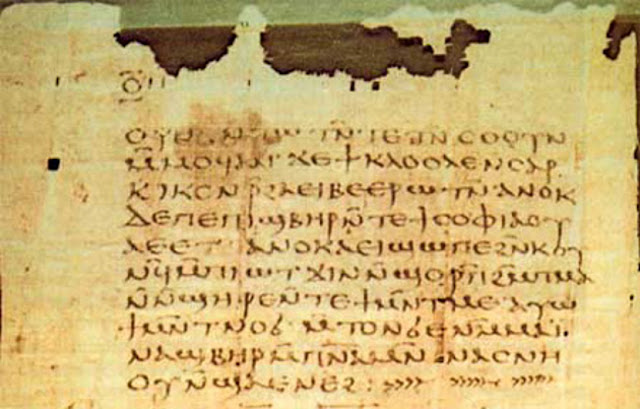 |
| The Apocalypse of Peter [Credit: WikiCommons] |
Professor Hugo Lundhaug at the Faculty of Theology, who heads a enquiry projection investigating the provenance too business office of these codices (the NEWCONT project), tells us that the ideas institute inward the Nag Hammadi Codices are ofttimes real dissimilar from those familiar to us inward the Bible.
”These codices demonstrated that a far greater multifariousness of ideas existed amongst people who considered themselves Christian than was previously thought,” Lundhaug explains.
The Codices are written inward Coptic, a shape of the Egyptian linguistic communication used inward the belatedly antique period. They comprise 52 works, most of which were previously unknown to modern scholars. It is probable, although non certain, that most of the texts were originally composed inward Greek too receive got been translated into Coptic for the do goodness for non-Greek readers, but for the purposes of Lundhaug’s enquiry projection it is the Coptic texts every bit they receive got been preserved inward the manuscripts, too the producers too readers of these manuscripts that is the focus.
The Question of Origins
The interrogation of who owned too produced the Nag Hammadi Codices is crucial when nosotros wish to assess their historical significance. In guild to empathize what these books may receive got meant to those who read them, nosotros demand to know who truly read them.
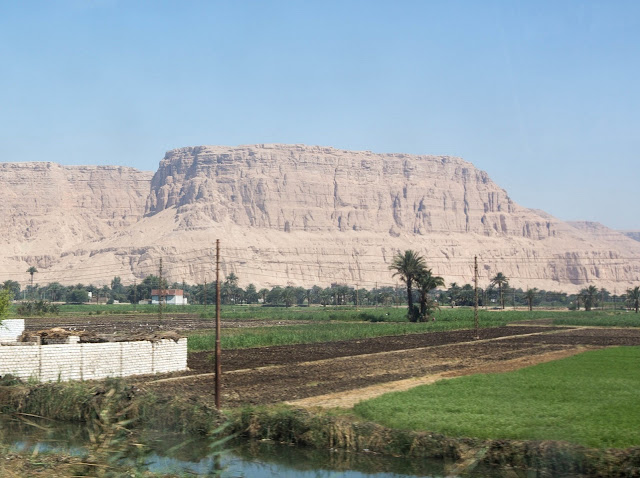 |
| Jabal al-Tarif, the cliff where the Nag Hammadi Codices were discovered [Credit: Hugo Lundhaug] |
The interrogation of who produced too used these codices, whether a grouping of heretical “Gnostics,” a wealthy “syncretistic” private or individuals, or Christian monks, has been debated for decades. ”Since in that location was soundless no scholarly consensus on the affair later all these years, in that location was a demand to examine the evidence to a greater extent than closely from every bit many angles every bit possible, too to assess the various alternatives every bit thoroughly every bit possible,” Lundhaug states.
The enquiry conducted inward the NEWCONT-project has left him too Jenott inward no doubtfulness that the Nag Hammadi Codices originate from too were read past times Christian monks.
In before attempts to respond the interrogation of ownership, the controversial contents of the codices receive got led many scholars to insist that they could non receive got belonged to Christian monks, but rather to a grouping of ‘Gnostics,’ heretics influenced past times Greek philosophy, organized inward exclusive communities, whose members desired access to hush-hush cognition that was revealed alone to an elect few.
Those who receive got held this sentiment receive got regarded the codices every bit ‘Gnostic’ books that could non receive got been read past times orthodox Christians, such every bit the early on Christian monks, too peculiarly non past times the monks of the Pachomian monastic community, who are traditionally regarded every bit having been real much inward draw of piece of job with the dominant Alexandrian orthodoxy of the time.
Contests Claims of Gnostic Origins
Inspired past times recent enquiry that challenges the usefulness of the real category of ‘Gnosticism,’ Lundhaug too Jenott debate that this category has created much confusion inward discussions regarding the provenance of the Nag Hammadi Codices.
 |
| The Nag Hammadi Codices [Credit: YouTube] |
“Contrary to what has ofttimes been argued, the texts institute inward the Nag Hammadi Codices are hard to allocate to whatsoever i of the several viewpoints usually given the scholarly label ‘Gnostic,’ ” Lundhaug says.
”The texts taken together do non readily conform to mutual stereotypical ideas of ‘Gnostic’ attitudes, such every bit a ‘hatred of the footing too its creator,’ or an ‘anti-biblical’ stance”, he explains. Further, it is hard to notice concrete evidence for societies or organisations inward the 4th too 5th centuries that would gibe modern scholarly notions of ‘Gnostics.’
Monks too Their Reading Habits
The thought that the Nag Hammadi Codices may receive got belonged to Egyptian monks was suggested past times some of the scholars who outset studied the codices. They noted inward item the existence of several monasteries inward the expanse unopen to the regain site, such every bit the major Pachomian monasteries at Sheneset (Chenoboskion), Pbow, too Tabennesi.
Some scholars receive got emphasized what they receive got regarded to live the ‘philosophical’ too ‘anti-biblical’ contents of the Nag Hammadi texts, too receive got argued that they must receive got belonged to a grouping of urban intellectuals sufficiently educated inward Greek philosophy to read too empathize them.
On the contrary, Lundhaug too Jenott debate that the type of urban intellectuals imagined past times those who receive got championed this hypothesis would receive got exactly read these texts inward Greek, too non inward Coptic, the linguistic communication of the Nag Hammadi Codices: “If the owners were urban intellectuals steeped inward Greek philosophy too culture, why would they read their literary texts inward Coptic too bother to interpret them from Greek inward the outset place? Why non exactly read the texts inward Greek?” Lundhaug too Jenott ask.
Rather than having been copied to live read past times people exactly every bit skilled inward Greek every bit inward Coptic, Lundhaug too Jenott maintain that the Nag Hammadi texts were most likely translated into Coptic for the do goodness of a monastic community which would receive got included a number of non-Greek readers.
The Case for a Monastic Origin
Lundhaug too Jenott construct their instance for a monastic rootage past times surveying a broad breadth of textile too discussing the interrogation from a multitude of angles. They exhibit how biographies of saints, monastic rules, documentary papyri too archaeological evidence pigment a painting exhibit of early on monasticism every bit to a greater extent than various than has ofttimes been ofttimes recognised, both inward damage of arrangement too theology, too how books similar the Nag Hammadi Codices gibe into this picture.
”Monks were criticised on several occasions past times Church regime for reading non-canonical or apocryphal literature. Despite this condemnation, such industrial plant continued to shape component of monastic libraries for many centuries to come”, he explains.
The existence of monastic rules regulating the circulation of literature besides dot the fact that monks did non ever read exactly what their superiors wanted them to read, too that in that location was a concern with controlling who could read what.
Lundhaug too Jenott besides banker's complaint how many of the themes that seem inward the texts of the Nag Hammadi Codices would receive got appealed to monks. In add-on to a pervasive emphasis on ascetic practices, they include discussions of subjects such every bit spiritual progress, revealed knowledge, visions, heavenly ascents, angels too demons, too the fate of the soul later death.
There is besides a important emphasis on scriptural interpretation, were peculiarly the outset chapters of Genesis, but besides other parts of what has come upward to live regarded every bit canonical Scripture, including the New Testament Gospels too the letters of Paul, are alluded to too interpreted inward many dissimilar ways.
Considering what nosotros know of the early on Pachomian monks’ practices of Scriptural reading, memorization, too interpretation, it is tardily to imagine how the Nag Hammadi Codices mightiness gibe into a monastic library amongst Biblical texts too other, well-known, monastic industrial plant of the period.
Evidence on Scrap Paper
Lundhaug too Jenott besides hash out the production techniques used inward the making too writing of the codices too the human relationship of the Nag Hammadi Codices to other Christian books produced at around the same period.
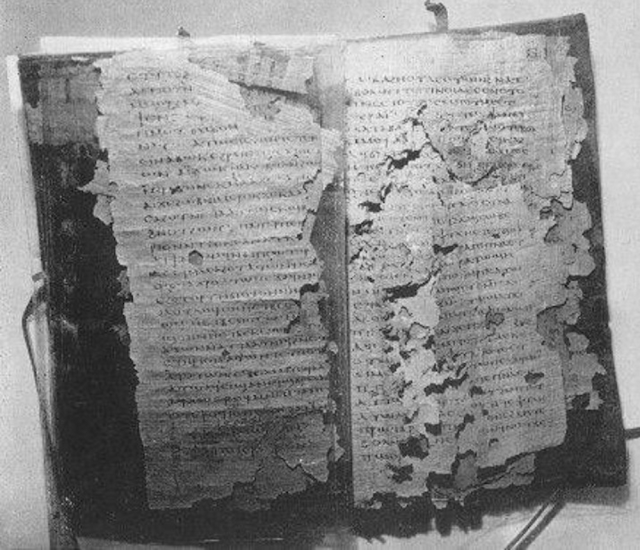 |
| Papyryus codicies of the Nag hammadi library [Credit: Mike Shea/Flickr] |
One such representative is the manuscript known every bit P75, i of the most of import New Testament manuscripts, containing the Gospels of Luke too John, which was discovered alone a few kilometers from where the Nag Hammadi Codices were found, too which may besides derive from i of the nearby Pachomian monasteries.
Lundhaug too Jenott pay item attending to the “cartonnage” textile used to stiffen the leather covers of the Nag Hammadi Codices. Cartonnage was traditionally made upward of scraps of discarded papyrus from personal letters, concern human relationship books, too so on. It thence provides invaluable evidence for everyday life too the social context inward which the codices were produced.
In the instance of the Nag Hammadi Codices, these cartonnage papyri include an entire collection of personal letters written to too from monks, strongly suggesting that the codices themselves were produced past times monks. These documents include several references to a monk named Sansnos who writes virtually both economical too philanthropic issues with his correspondents.
Some scholars have, however, dismissed these fragments every bit irrelevant, tilt instead that such letters mightiness receive got been exactly collected from a local rubbish heap, too thence shed no low-cal on the book-makers. Lundhaug too Jenott debate for the likelihood that these documents were inward fact the belongings of the people who made the codices and, every bit such, are valuable evidence for pinpointing the rootage of these books.
One highly important alphabetic quality is inward fact addressed to a sure ‘Father Pachomius,’ whom Lundhaug too Jenott maintain is likely the famous abbot Pachomius himself. If so, so this alphabetic quality demonstrates beyond doubtfulness a unopen connection betwixt the makers of the codices too the nearby Pachomian monasteries.
Pachomian Monks
Lundhaug too Jenott hash out which type of monastic grouping may receive got owned the codices, too come upward to the decision that the Pachomian Federation, founded past times Pachomius inward the early on 4th century too traditionally held to live the earliest Christian monastic organization, is the most likely community to receive got owned the Nag Hammadi Codices.
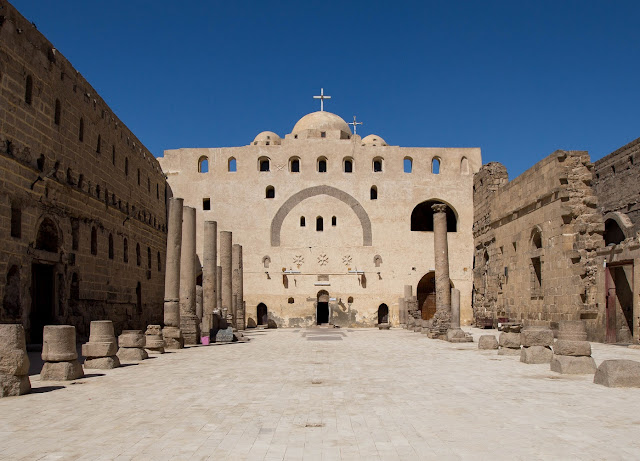 |
| The White Monastery [Credit: Hugo Lundhaug] |
Lundhaug too Jenott emphasise the multifariousness inside the Pachomian community.
“There is evidence for ongoing concerns over apocryphal books read inward their monasteries, too the Pachomians placed peachy emphasis upon literacy too biblical interpretation”, Lundhaug explains.
The monks demand non receive got believed everything they read, but many of them would sure as shooting receive got been interested inward the various interpretations of the Bible, for representative stories virtually Adam too Eve, too Jesus appearing to his disciples later his resurrection, which are recorded inward these books.
Discarded every bit Heretical Books
”Very often, an overly idealized painting exhibit of monasticism has obscured our powerfulness to empathize the interests, concerns, too social interactions of the early on Egyptian monks. The thought that the Pachomian monks could receive got read the Nag Hammadi Codices for edification has ofttimes been excluded from the outset due to the notion that these monks were orthodox too thus would non receive got read texts similar these.
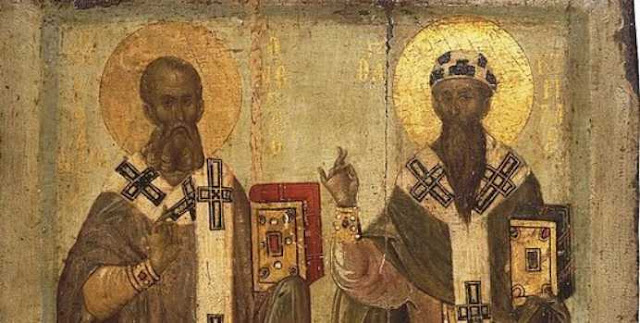 |
| Saints Athanasius too Cyril [Credit: NEWCONT Project] |
“It is of import to recall that the monks who may receive got read these industrial plant for spiritual guidance were besides likely to receive got had recourse to many other religious industrial plant inside their libraries, including the books of the Bible.” In time, every bit Christian thought developed, the reading of such odd texts would locomote less acceptable until lastly the command came to discard them completely.
Several features of the Nag Hammadi texts, such every bit the inclusion amongst them of so-called ‘secret books,’ discussions of the primordial autumn of souls, the resurrection, too sure ideas concerning the nature of Christ too his human relationship with the Father, may receive got caused their users to receive got been branded every bit ‘Origenists,’ a heretical label applied to sure monks inward the theological controversies of the belatedly 4th too early on 5th centuries.
This may inward fact receive got been the ground why these books were eventually gathered together inward a jolt too buried, non to live institute over again until 1945, thus creating a time-capsule giving us invaluable insight into the manuscript civilization too reading habits of the early on Christian monks.
Lundhaug too Jenott limited their promise that the enquiry of the NEWCONT-project too their of late published mass volition human activity every bit a catalyst for farther enquiry into the codices every bit a component of the monastic civilization of Upper Egypt.
“In many ways, enquiry into these fascinating manuscripts receive got alone exactly begun,” they state, too emphasize non alone how of import it is that time to come studies of the Nag Hammadi texts convey fully into concern human relationship the monastic provenance of the manuscripts, so every bit to meliorate empathize the texts, but besides that studies of early on Egyptian monasticism should non maintain to ignore the Nag Hammadi Codices, which, every bit the enquiry of the NEWCONT-project shows, constitute some of the earliest too most well-preserved evidence of monastic literary practices inward existence.
Author: Paula Jean Tutty | Source: University of Oslo via ScienceNordic [May 27, 2016]






0 comments